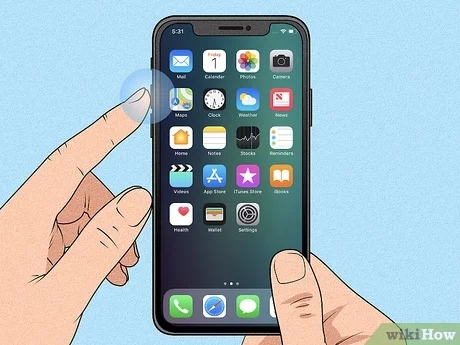In the digital age, our smartphones carry more than just contacts and pictures. They are reservoirs of personal information, banking details, private conversations, and so much more. Ensuring this data doesn’t fall into the wrong hands is paramount, especially when you’re planning to upgrade, sell, or dispose of your iPhone. This guide will walk you through the process of wiping your iPhone, ensuring all your personal information is securely erased, and your device is as good as new for its next owner.
Understanding the Importance of Wiping Your iPhone
Before diving into the step-by-step process, it’s crucial to understand why wiping your iPhone is essential. Beyond just deleting your photos and messages, a complete wipe ensures that all traces of your data, including saved passwords, browsing history, and app data, are removed. This is particularly important in protecting your digital footprint and ensuring your personal information doesn’t become vulnerable to data breaches or identity theft.
Moreover, wiping your iPhone can also help in enhancing its performance for the next user. By clearing the cache and other redundant files, you’re essentially giving the device a fresh start, which can significantly improve its functionality and extend its lifespan.
Preparing to Wipe Your iPhone
Before you initiate the wiping process, there are a few preparatory steps you need to undertake to ensure a smooth and secure transition.
Backup Your Data
First and foremost, backup your iPhone. Apple offers various ways to do this, with iCloud being the most popular. By backing up to iCloud, you ensure that all your data, including photos, apps, and settings, are safely stored in the cloud, making it easy to transfer to a new device. Alternatively, you can use iTunes to create a backup on your computer. Regardless of the method, ensuring all your data is backed up is crucial before proceeding with the wipe.
Sign Out of Apple ID and iCloud
Signing out of your Apple ID and iCloud is a critical step in the wiping process. This ensures that your device is no longer linked to your personal accounts and that features like Find My iPhone are deactivated. Failing to sign out can lead to complications for the next user and might even prevent them from setting up the device under their account.
Turn Off iMessage and FaceTime
Similarly, turning off iMessage and FaceTime is essential in ensuring that you no longer receive messages or calls once the device is no longer in your possession. This step is particularly important if you’re transitioning to a non-Apple phone, as it prevents your messages from being incorrectly routed to your old iPhone.
The Wiping Process
With the preliminary steps out of the way, you’re now ready to proceed with the actual wiping of your iPhone. Apple has made this process straightforward, ensuring that even those not tech-savvy can securely erase their devices.
Erase All Content and Settings
The option to “Erase All Content and Settings” is found within the Settings app under General > Reset. Initiating this process will prompt you for your device’s passcode and your Apple ID password, which serves as a security measure to prevent unauthorized erasures.
Once confirmed, the iPhone will begin the wiping process, which can take a few minutes to over an hour, depending on the amount of data and the model of your iPhone. It’s crucial to keep the device connected to a power source during this time to prevent any interruptions.
What Happens Next?
After the wiping process is complete, your iPhone will restart as if it were a new device, displaying the welcome screen and setup process that you encountered when you first purchased it. At this point, the device is free of any personal information and is safe to pass along to its next owner.
Final Thoughts
Wiping your iPhone is a critical step in safeguarding your personal information and ensuring a seamless transition to your new device. By following the steps outlined in this guide, you can rest assured that your old iPhone is ready for its next journey, free from any remnants of your data. Remember, taking the time to properly prepare and wipe your device not only protects you but also contributes to a more sustainable and responsible approach to technology use and disposal.

